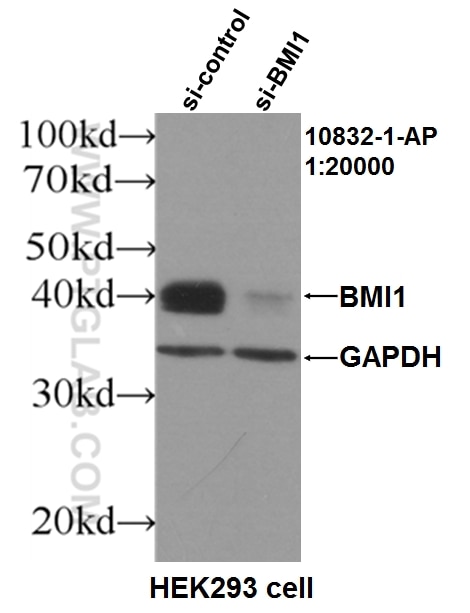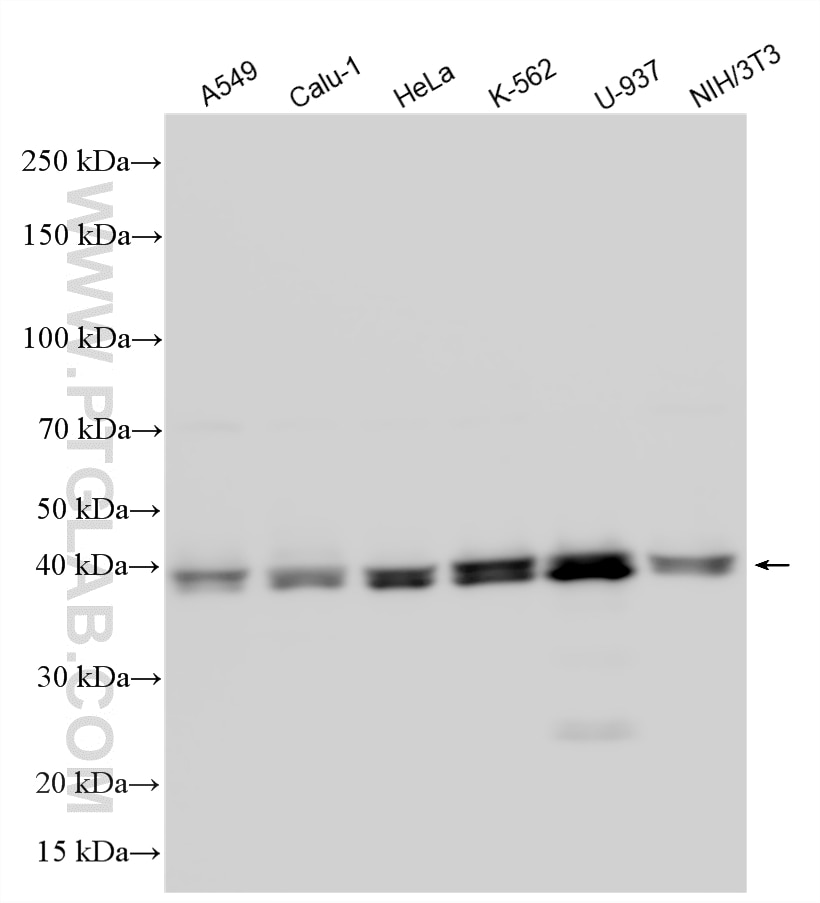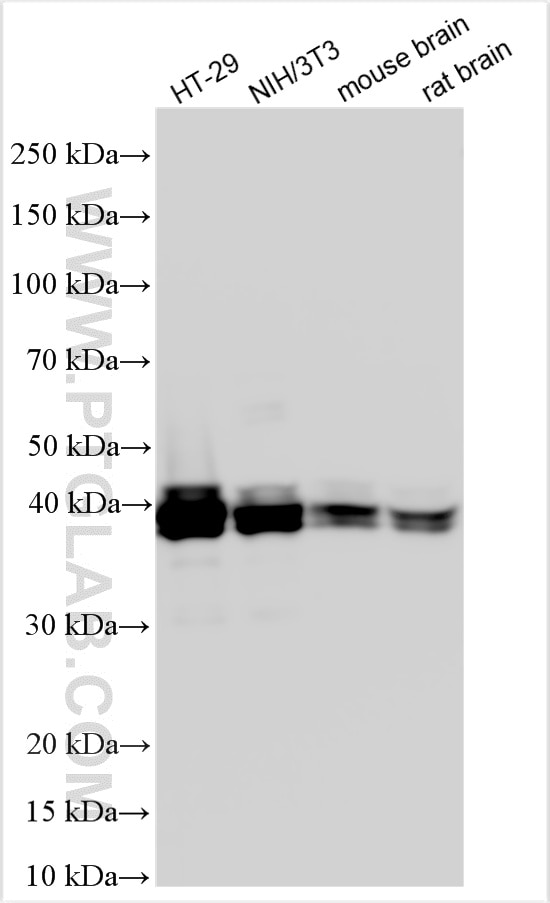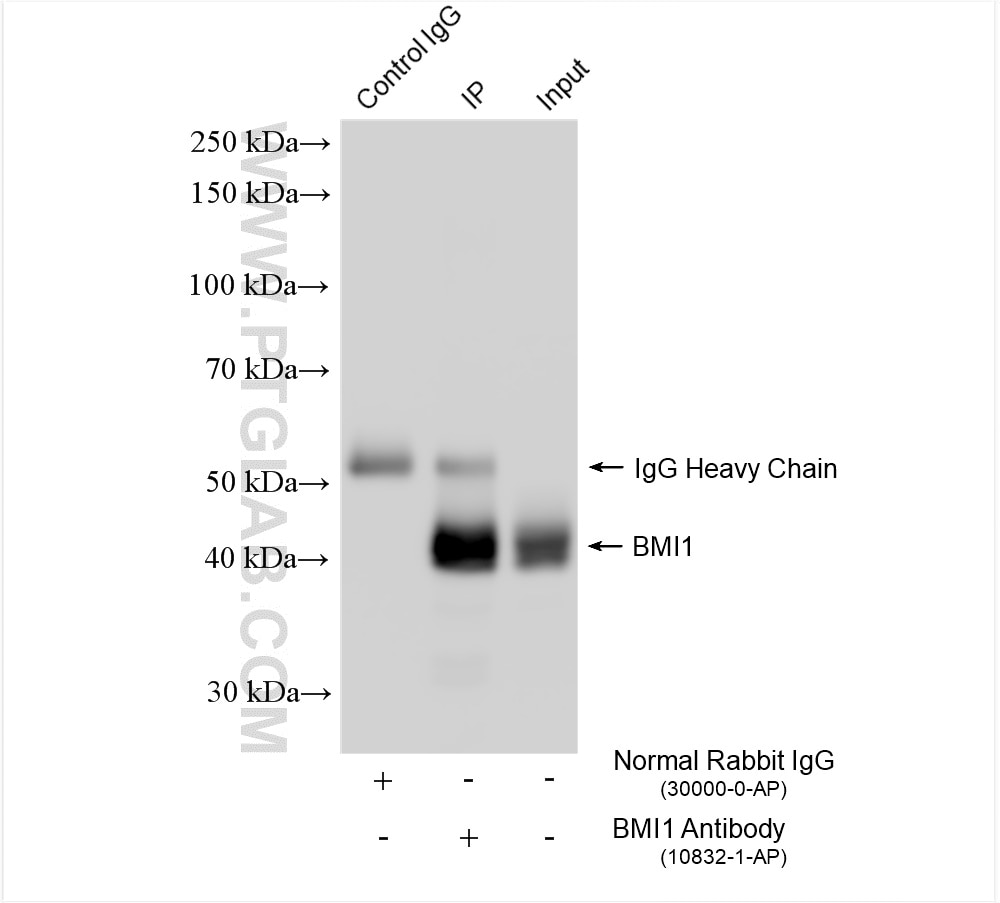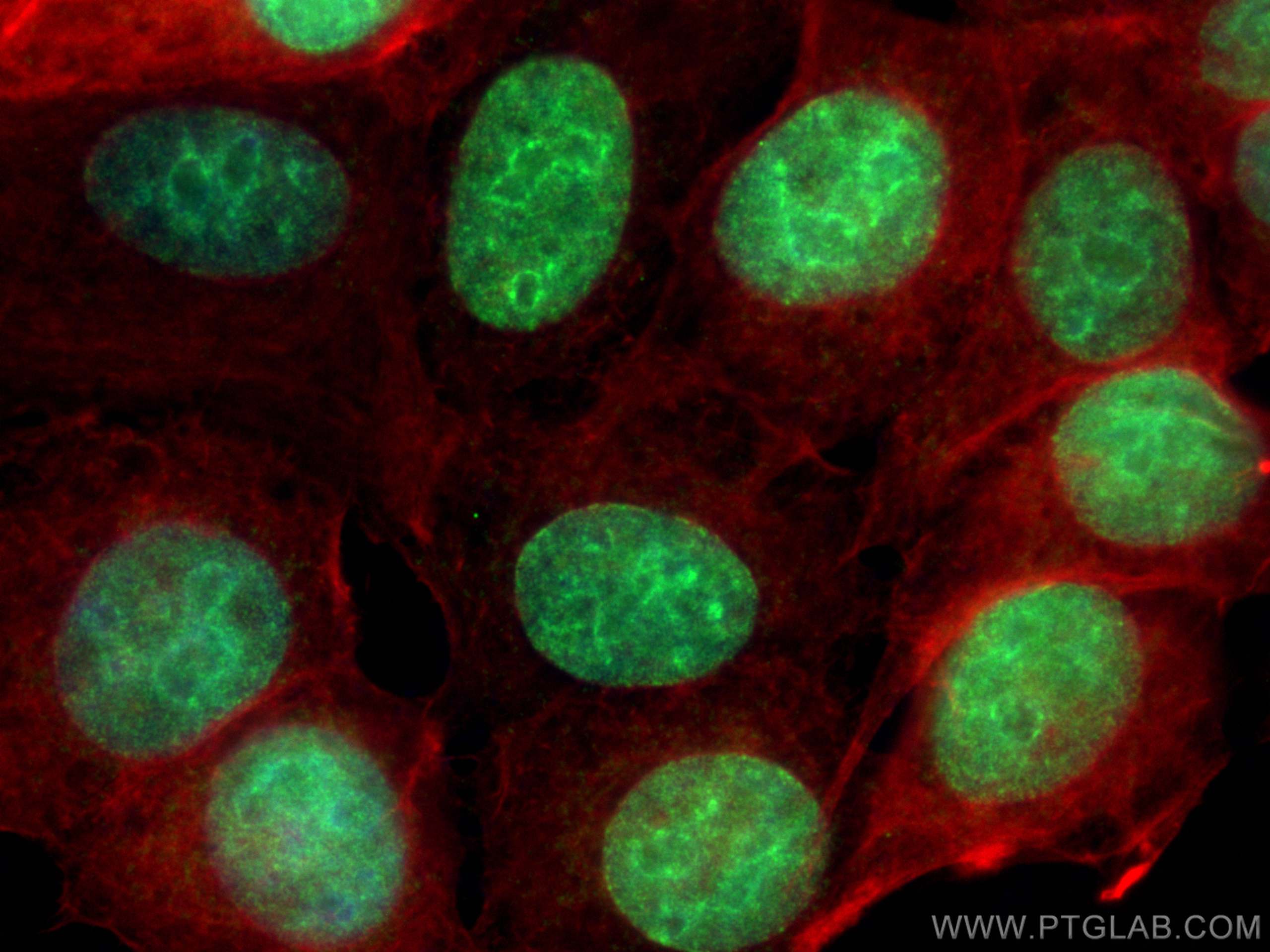- Phare
- Validé par KD/KO
Anticorps Polyclonal de lapin anti-BMI1
BMI1 Polyclonal Antibody for WB, IF/ICC, IP, ELISA
Hôte / Isotype
Lapin / IgG
Réactivité testée
Humain, souris
Applications
WB, IHC, IF/ICC, IP, CoIP, ChIP, ELISA
Conjugaison
Non conjugué
N° de cat : 10832-1-AP
Synonymes
Galerie de données de validation
Applications testées
| Résultats positifs en WB | cellules HT-29, cellules A549, cellules HEK-293, cellules HeLa, cellules K-562, cellules NIH/3T3, cellules U-937, tissu cérébral de rat, tissu cérébral de souris |
| Résultats positifs en IP | cellules HT-29, |
| Résultats positifs en IF/ICC | cellules MCF-7, |
Dilution recommandée
| Application | Dilution |
|---|---|
| Western Blot (WB) | WB : 1:5000-1:50000 |
| Immunoprécipitation (IP) | IP : 0.5-4.0 ug for 1.0-3.0 mg of total protein lysate |
| Immunofluorescence (IF)/ICC | IF/ICC : 1:300-1:1200 |
| It is recommended that this reagent should be titrated in each testing system to obtain optimal results. | |
| Sample-dependent, check data in validation data gallery | |
Applications publiées
| KD/KO | See 5 publications below |
| WB | See 38 publications below |
| IHC | See 8 publications below |
| IF | See 5 publications below |
| IP | See 1 publications below |
| CoIP | See 2 publications below |
| ChIP | See 2 publications below |
Informations sur le produit
10832-1-AP cible BMI1 dans les applications de WB, IHC, IF/ICC, IP, CoIP, ChIP, ELISA et montre une réactivité avec des échantillons Humain, souris
| Réactivité | Humain, souris |
| Réactivité citée | Humain, souris |
| Hôte / Isotype | Lapin / IgG |
| Clonalité | Polyclonal |
| Type | Anticorps |
| Immunogène | BMI1 Protéine recombinante Ag1286 |
| Nom complet | BMI1 polycomb ring finger oncogene |
| Masse moléculaire calculée | 37 kDa |
| Poids moléculaire observé | 37-43 kDa |
| Numéro d’acquisition GenBank | BC011652 |
| Symbole du gène | BMI1 |
| Identification du gène (NCBI) | 648 |
| Conjugaison | Non conjugué |
| Forme | Liquide |
| Méthode de purification | Purification par affinité contre l'antigène |
| Tampon de stockage | PBS with 0.02% sodium azide and 50% glycerol |
| Conditions de stockage | Stocker à -20°C. Stable pendant un an après l'expédition. L'aliquotage n'est pas nécessaire pour le stockage à -20oC Les 20ul contiennent 0,1% de BSA. |
Informations générales
BMI- 1 is one of polycomb group genes, which together with Ring1 strongly enhances the E3 ubiquitin ligase activity of the Ring2 catalytic subunit. Bmi1 plays an important role in the regulation of cell proliferation and senescence through repression of the p16Ink4a and p19Arf genes and is required for maintenance of adult hematopoietic and neural stem cells. The antibody 10832-1-AP detected proteins of 45-48kda, which may include phosphorylated isoforms of the protein.
Protocole
| Product Specific Protocols | |
|---|---|
| WB protocol for BMI1 antibody 10832-1-AP | Download protocol |
| IF protocol for BMI1 antibody 10832-1-AP | Download protocol |
| IP protocol for BMI1 antibody 10832-1-AP | Download protocol |
| Standard Protocols | |
|---|---|
| Click here to view our Standard Protocols |
Publications
| Species | Application | Title |
|---|---|---|
EMBO J A covalently bound inhibitor triggers EZH2 degradation through CHIP-mediated ubiquitination. | ||
Dev Cell ASK1-Mediated Phosphorylation Blocks HDAC6 Ubiquitination and Degradation to Drive the Disassembly of Photoreceptor Connecting Cilia.
| ||
Oncogene Autophagy regulates the cancer stem cell phenotype of head and neck squamous cell carcinoma through the noncanonical FOXO3/SOX2 axis. | ||
J Neurosci Altered histone monoubiquitylation mediated by mutant huntingtin induces transcriptional dysregulation. | ||
Int J Cancer SOX8 regulates cancer stem-like properties and cisplatin-induced EMT in tongue squamous cell carcinoma by acting on the Wnt/β-catenin pathway. | ||
Oncotarget Ascl2 activation by YAP1/KLF5 ensures the self-renewability of colon cancer progenitor cells. |
